Across Sri Lanka, the country’s flag is flown at half-mast on 12th July to mourn the sudden assassination of Japan’s former Prime Minister Shinzo Abe. “We have lost a prime minister who gave leadership to Asia,” wrote Sri Lanka’s President Ranil Wickremesinghe in an obituary guestbook commemorating the Japanese leader. Despite Sri Lanka’s melancholic posture towards the Japanese leader’s demise, Sri Lanka’s foreign policy has posed a consistent thorn in Abe’s vision for a “free and open Asia-Pacific”.
In their obituary for the Japanese statesman, the Economist highlights the transformative role Abe played in creating the Quadrilateral Security Dialogue Alliance and envisioning a “free and open Asia-Pacific” which “is now at the conceptual heart of America’s grand strategy in Asia”. Speaking before India’s parliament in 2007, Abe expanded on this vision describing it as the “confluence of two seas”.
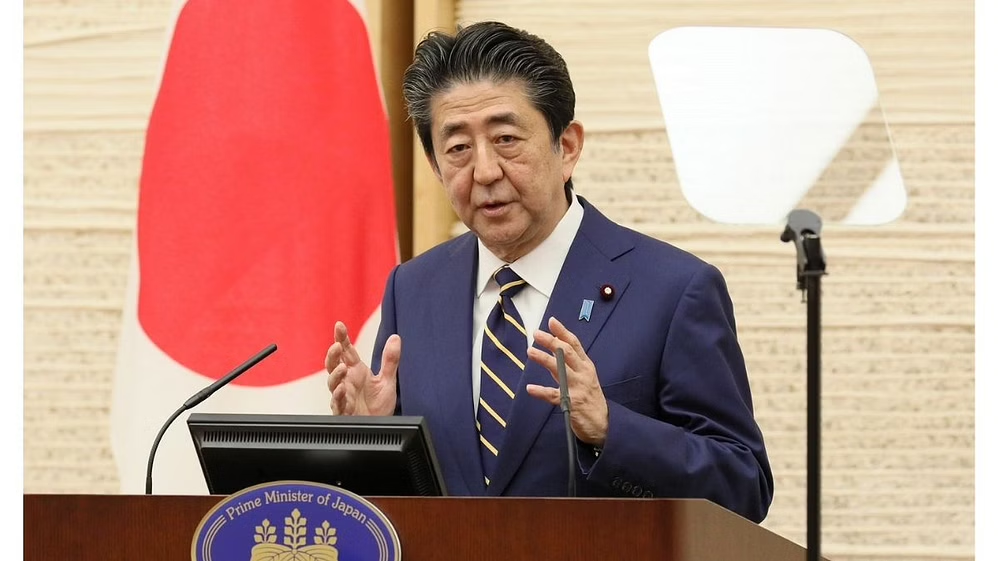
“The Pacific and the Indian Oceans are now bringing about a dynamic coupling as seas of freedom and of prosperity” Abe declared.
He added:
“This partnership is an association in which we share fundamental values such as freedom, democracy, and the respect for basic human rights as well as strategic interests”.
Whilst a welcome vision for Washington and New Delhi, in Colombo talk of transparency, human rights, and the free movement of goods and capital, received a more hostile reception. Whilst heavily reliant on Japan and India, Sri Lanka’s nativist foreign policy has perpetually kept these partners at an arms-length.
Under President Gotabaya Rajapaksa, Sri Lankan-Japanese relations hit an all-time low point with the sudden cancellation of a $1.5 billion Japanese-funded light rail project for Colombo, which had been agreed upon in March 2019, and a similar unilateral withdrawal from the East Container Terminal (ECT) project at the Colombo Port which Japan, India and Sri Lanka agreed upon in 2019 worth an estimated $700 - $800 million dollars.
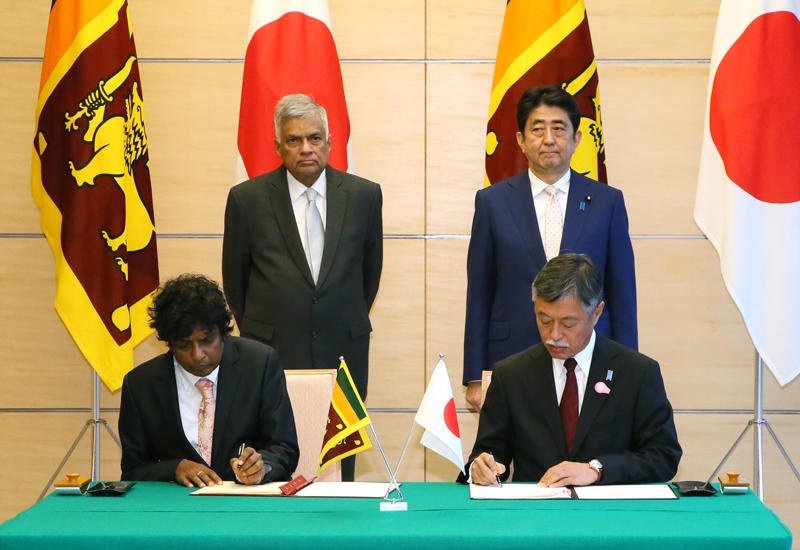
Whilst Sri Lanka’s current president has attempted to redirect the country’s alliances, there is a deep animosity in the island’s Sinhala South to engage with these partners driven by a vitriolic Sinhala Buddhist nationalism. The Rajapaksa government announced the scrapping of ECT when faced with a sustained protest by the island’s south and Buddhist monks, which warned that it was a vehicle for an Indian invasion.
Instead, under the Rajapaksa clan, Colombo’s elite pursued closer ties with Beijing. The island was flooded with Chinese loans for “white elephant” projects in the South that produce little but added significantly to Sri Lanka’s burgeoning debt. In return for Chinese financial aid, and its willingness to defend Sri Lanka at international fora, such as the UN Human Rights Council, Sri Lanka continued to shower the Asian giant with praise, defend China’s genocidal treatment of the Uighurs, and push back against the QUAD.
China, for Sri Lanka’s elite, was an ideal partner given its unflinching resolve to defend Sri Lanka even as it committed genocide against Tamils. During the end of the armed conflict, China became the island’s primary source of military aid and worked to keep Sri Lanka off the United Nation’s agenda. This occurred as the Sri Lankan army mercilessly shelled hospitals, food lines, and no-fire zones, killing an estimated 169,796 people.
Japan is well attuned to the threats posed by an increasingly aggressive China in the Asia-Pacific. Speaking to the Economist, Abe explained how China’s ascent “posed an existential challenge to Japan similar to that of Western imperial powers when they turned up in gunboats in Tokyo Bay in the mid-19th century”.
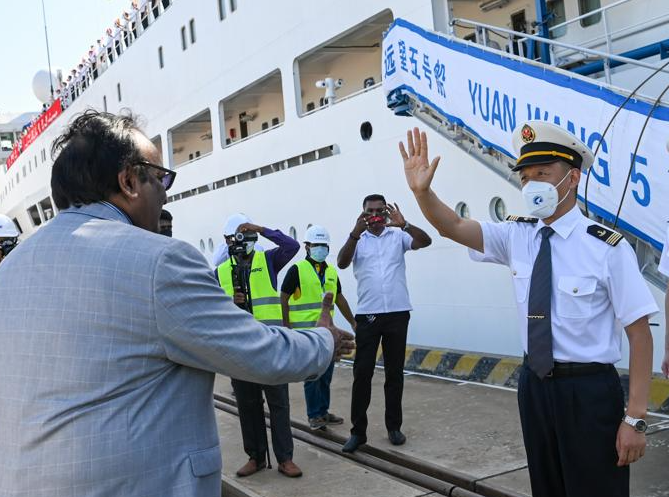
These past weeks have seen a public spat between India and China over the docking of a Chinese military vessel at the Chinese-owned Hambantota port, which occurred despite significant protest from New Delhi. Increasing there are concerns over that the port may be used as a military base by China.
For its part, Japan has seen Sri Lanka as a site of significant strategic importance and has acted to try and preserve peace and stability on the island. In May 2002, Japan’s foreign policy pivoted towards “peace-building” in conflict regions such as Afghanistan, Indonesia, Philippines, East Timor, and importantly Sri Lanka. This was in part to safeguard vital energy supplies in West Asia as well as investments in South Asia.
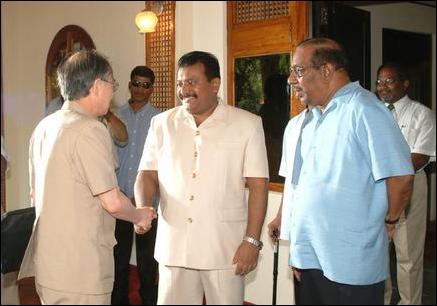
Japanese diplomats were reportedly deeply uncomfortable with India’s “hands-off” approach and worked to actively support the Norwegian facilitated peace talks of March 2003 and the Donor Conference in June 2003. Japanese diplomat, Yasushi Akashi, also travelled to Kilinochchi to meet with the Velupillai Prabhakaran and the senior leadership of the LTTE.
During this period, Japan expressed deep concern over the rehabilitation and reconstruction of the war-ravaged North-East. In 2010, it was reported that since 2002, Japan has provided an estimated US $95 million by way of project assistance for the development and welfare of the Tamil North-East. And yet despite Japanese efforts, the North-East remains severely underdeveloped and overly militarised. A 2017 report detailed that for every two civilians there is one soldier in Mullaitivu.
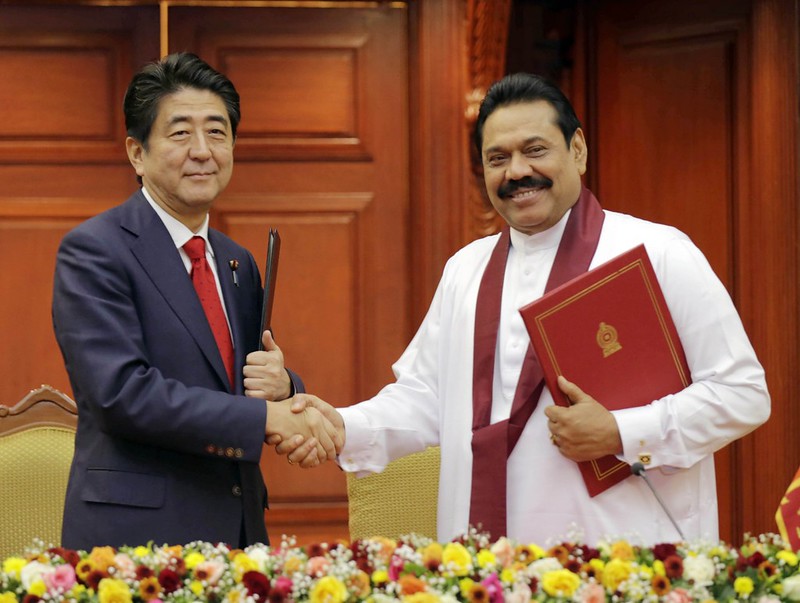
In part, Sri Lanka trajectory is due to a failed policy pursued by Abe of appeasement guided by a misplaced belief in Colombo’s leaders. In March 2014, Japan abstained from a resolution calling for an international investigation into Sri Lankan war crimes. Japan’s Vice Minister for Foreign Affairs Seiji Kihara was defiant in his support for Sri Lanka claiming Japan would not accept “biased reports” by international organisations. The Japanese delegation at the UN expressed their confidence that Sri Lanka could deliver on reconciliation through a domestic process.
With the latest UNHRC resolution, little has changed. India and Japan abstained from voting for a weak resolution that would mandate the collection of evidence which may be used in a future war crimes tribunal. Despite the untrustworthy nature of the Sri Lankan administration, New Delhi and Tokyo were convinced they could work with the now exiled Sri Lankan leader.
Next month, Sri Lanka’s president will visit Tokyo to hold discussions with Japan’s premier Fumio Kishida over its outstanding debt. Reuters reports that Japan is seeking to organise a creditor conference to help Sri Lanka resolve its debt crisis, however, a simple bail-out will not serve either the interest of Sri Lankans seeking genuine democratic reform or Japan’s strategic interest. Instead, Japan’s leadership must be willing to confront the forces of Sinhala Buddhist nationalism, which has pushed Sri Lanka towards China.
Clear demands for demilitarisation of the North-East to aid the development of these poverty-stricken regions would be a decisive step toward Abe’s vision. Demands for accountability and self-determination may put Sri Lanka on the path to peace. Continued appeasement, however, will see the island caught in perpetual cycles of violence and increasingly reliant on China.

